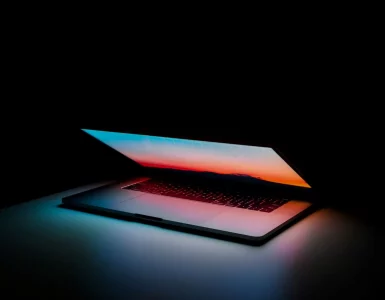A good frontend developer understands the complex requirements of creating truly attention-capturing web designs. Simply gluing together HTML, CSS, and JavaScript code might make a working website or web app, but it won’t help create designs that communicate with the users.
A competent frontend engineer knows that harmonizing visuals and content requires non-technical skills. If the ‘harmonious’ part seems sophisticated, it is not. With an understanding of some essential design concepts, frontend developers can improve their design skills.
Let’s start with the concepts of design important for frontend development first.
The principles of design
You do not need to have an innate artistic ability to become a talented frontend developer; knowing design fundamentals is adequate. Understanding the design principles will make the difference between recreating a design you see and building unique and calculated designs from scratch.
The essentials of visual design principles are entirely rooted in Gestalt Psychology, the foundation of the modern study of perception. The same fundamentals form the foundation of web and graphics design. While a vast domain, here is the three fundamental principles of design you must know:
Emergence: It is the practice of seeing an arrangement of objects as a whole rather than focusing on individual parts. Emergence helps front-end developers identify asymmetry when a piece breaks a pattern.
Reification: It helps practice restraint in web designs. Reification is the practice of using only essential parts of an object to convey the meaning.
Invariance: It is the ability to include tasteful discordance in web designs and make an object stand out from a group of similar things. Designers use invariance to highlight parts of a design.
Typography
Typography shapes the perception of ideas when people look at them. Everything from a type’s weight to its geometry communicates meaning. As a front-end developer, you must understand how to make typographical choices to deliver the message in the best way.
Frontend developers have many resources to keep on top of typography trends. Font Reach is one such website. Good designers always understand the difference between type styles and how to use them.
Color Theory
Frontend developers should understand combining primary colors to create new color palettes. But effective web design requires a bit more. As a frontend designer, you should be familiar with the concept of the color wheel. You should know how complementary, contrasting, and analogous colors work together.
Knowledge of color theory helps frontend developers avoid common mistakes like the use of clashing colors. You should take the guesswork out of your designs and stop wasting time with a trial-and-error approach. Here is an excellent resource to learn color theory. Now that underlying concepts of practical and unique web designs are there, we must also provide tips on learning them.
Practice is the key
There is no alternative, the only way you will get better is by creating projects to bring your design ideas to life. Fortunately, plenty of resources such as Behance, Dribbble, and even Pinterest can serve as a source of inspiration for your next design. Keep in mind that you are exploring these websites for ideas and not to ‘steal’ things. You can start with a similar design or pattern that you saw, but as you iterate your project, introduce new colors, move objects, and try different compositions to transform it into something new.
Communication is mandatory
Being curious, asking questions, and respecting feedback will make you an excellent designer. It can be tricky to comprehend why communication can be an essential design skill for a front-end developer. Designing is a form of visual communication. For instance, when you put an element in the corner of a design, you tell the users that there is some action to be taken here.
Frontend developers build on top of the code written by backend developers. To integrate the backend functionalities seamlessly into the frontend design, you must communicate with other developers effectively. As part of a team, you can use communication to anticipate any design challenges that might come up during future development and deploy solutions proactively.
Tools come in handy
You do not have to practice on whiteboards; some great tools help you save time and increase efficiency. Adobe Creative Libraries is a fantastic tool for front-end developers to create unique elements that they can use for web pages, apps, and applications. Codepen.io is another excellent tool that helps front-end developers create UI elements in a live environment to see how things will look.
Conclusion
Frontend development lies at the intersection of technology, design, and communication. You can start by implementing the ideas of other great designers into your projects. With each iteration, introduce your elements in the design, and soon enough, you will be creating strategically calculated and unique web designs on your own.
Talent500 helps front-end developers find the best opportunities with global companies. Join our elite pool of talent to get discovered by the best.






Add comment